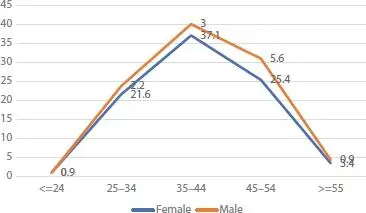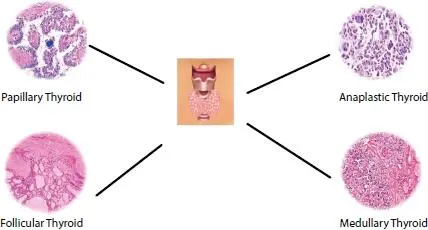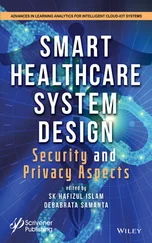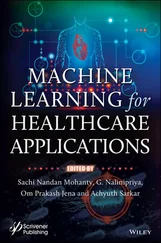Advanced Healthcare Systems
Здесь есть возможность читать онлайн «Advanced Healthcare Systems» — ознакомительный отрывок электронной книги совершенно бесплатно, а после прочтения отрывка купить полную версию. В некоторых случаях можно слушать аудио, скачать через торрент в формате fb2 и присутствует краткое содержание. Жанр: unrecognised, на английском языке. Описание произведения, (предисловие) а так же отзывы посетителей доступны на портале библиотеки ЛибКат.
- Название:Advanced Healthcare Systems
- Автор:
- Жанр:
- Год:неизвестен
- ISBN:нет данных
- Рейтинг книги:5 / 5. Голосов: 1
-
Избранное:Добавить в избранное
- Отзывы:
-
Ваша оценка:
- 100
- 1
- 2
- 3
- 4
- 5
Advanced Healthcare Systems: краткое содержание, описание и аннотация
Предлагаем к чтению аннотацию, описание, краткое содержание или предисловие (зависит от того, что написал сам автор книги «Advanced Healthcare Systems»). Если вы не нашли необходимую информацию о книге — напишите в комментариях, мы постараемся отыскать её.
This book offers a complete package involving the incubation of machine learning, AI, and IoT in healthcare that is beneficial for researchers, healthcare professionals, scientists, and technologists.
Audience
Advanced Healthcare Systems — читать онлайн ознакомительный отрывок
Ниже представлен текст книги, разбитый по страницам. Система сохранения места последней прочитанной страницы, позволяет с удобством читать онлайн бесплатно книгу «Advanced Healthcare Systems», без необходимости каждый раз заново искать на чём Вы остановились. Поставьте закладку, и сможете в любой момент перейти на страницу, на которой закончили чтение.
Интервал:
Закладка:

Figure 3.1Analysis of thyroid.
A machine learning model was trained with a data set of 1,300 benign thyroid nodules and trained with following variables: Name, Age, Triiodothyronine Total (T3), Thyroxine Total (T4), TSH (4th Generation), and Serum [5]. Serum are present in about 60% of patients with autoimmune thyroid disease and are more frequent in females. This research paper has analyzed thyroid disease among different ages in years as shown in Figure 3.1.
3.4 Category of Thyroid Cancer
There are various categories of thyroid cancers that are found in tumours based on cells. These are papillary thyroid cancer, follicular thyroid cancer, anaplastic thyroid cancer, and medullary thyroid cancer, as shown in Figure 3.2.
There are various categories of thyroid cancers.
• Papillary Thyroid Cancer: Papillary thyroid cancer occurs mostly in children and women and grows very slowly. The common type of thyroid cancer is papillary thyroid cancer. This type of cancer occurs at any stage but is mostly affected between the ages of 30 and 50 [6].
• Follicular Thyroid Cancer: This is the second most common type of cancer caused by the thyroid and is less common than papillary thyroid cancer. This type of cancer mostly affects people above the age of 50 years. It is also a type of behavioral thyroid cancer but the thyroid has a slightly higher risk of spreading than papillary cancer [6].

Figure 3.2Categories of thyroid cancer.
• Anaplastic Thyroid Cancer: Anaplastic thyroid cancer has rapidly developing, poorly differentiated thyroid cancer that can begin with differentiated thyroid cancer or a benign thyroid tumor. It is often seen in patients who have prolonged thyroid inflammation. It spreads rapidly to both local and distant organs [6].
• Medullary Thyroid Cancer: Medullar thyroid cancer spreads more than other types of cancer. It is a special type of thyroid cancer that is hereditary in many patients. This type of cancer occurs in young children and can be treated well with adequate surgery [6].
3.5 Machine Learning Approach Toward the Detection of Thyroid Cancer
Machine learning is the technology of a new era, and it is the field that is used to construct models and is helpful in prediction of diseases. Machine learning algorithms are used to identify hidden patterns and relationships in historical data. Data are needed to support medical decision-making to predict accurate, robust, and efficient models. The use of machine learning in modern healthcare systems is increasing and necessary [7]. By 2025, CAGR has raised machine learning targets in the healthcare sector from $2.1 billion to $50.2% in 2018 to $36.1 billion. In fact, machine learning has an important part of patient data compared to improving healthcare delivery systems, cutting costs and developing, and monitoring and handling treatment processes and medicines. As we all know that maintaining and updating and recording the patient’s medical history is a very expensive process. These problems are solved by the use of machine learning technologies to reduce time, effort, and money.

Figure 3.3Machine learning life cycle model.
To build an efficient machine learning project in healthcare, there are various steps to do such as data gathering, data wrangling, analyze data, train the model, test the model, and deployment, as shown in Figure 3.3. Sickness treatment has ordinary influence for healthcare physicians, and impeccable diagnosis at the right time is very important for a patient [2]. Compared to the previous approach, machine learning first builds the model and then presents the first reliable and accurate predictions for model construction without defining patient characteristics.
There are various machine learning algorithms for thyroid detection, some of which are as follows.
3.5.1 Decision Tree Algorithm
This algorithm used the divide-and-conquer method to construct a decision tree to solve the classification problem using decision-making trees [8]. These form a model based on decisions that relate to features in the data set and very fast to train. Examples of these types of models include random forests and conditional decision trees. The goal is to create a model that predicts the accuracy of thyroid disease using target variables, i.e., TSH by using simple decision rules derived from data features, i.e., T3 and T4.
This algorithm works on the basis of input and output variable (x, y) that is specified in a label set of pairs as follows.
The algorithm is to learn the mapping function from the input variable x to the output variable y, which is given the label set of the input output pair
(3.1) 
In Equation (3.1), T represents the training set and n represents the number of training samples.
3.5.2 Support Vector Machines
This is machine learning algorithm that is used for text categorization, image segmentation that uses classification algorithm, and regression and detection of outlier. To implement this in healthcare, sampling is divided among training and testing [9]. This algorithm aims to isolate diseases and then work through a hyperplane. This algorithm used the training data as input and separated the graph of the data in the class as output in the hyperplane [10]. Let us consider classification task such as {u i, v i} where i = 1....n u iare data points, u iϵ S dand v iare labels. The data points and labels are displaced through the hyperplane with wtx + b = 0, where w represents a D-dimensional coefficient vector that is normal to the hyperplane and b represents an offset from the origin.
3.5.3 Random Forest
This machine learning algorithm is used to estimate hierarchical variables using a classification algorithm and to assess disease risk that evaluates a function that helps doctors to make medical decisions. The training time of random forest is less as compared to other algorithms. In healthcare, this algorithm is used for disease trends and disease risks that can be identified by analyzing the patient medical records.
3.5.4 Logistic Regression
Logistic regression is a supervised learning algorithm that is used to estimate target variables. The nature of the target or dependent variable is dichotomous, meaning that yes or no, there will be only two possible classes. In healthcare, logistic regression is used to predict a patient’s readmitted whether a patient is readmitted to a hospital or not. It can be divided into two classes: either the patient is not admitted or is not readmitted. Logistic regression can be used to classify whether a person will be prone to cancer due to environmental variables such as smoking habit, highway, and drinking alcohol [18].
3.5.5 Naïve Bayes
Naïve Bayes algorithm is used for prediction of disease. This algorithm trains label data sets and for this they must be trained on label data sets. This algorithm works on the basis of prior probability. The prior probability is the probability of disease that is based on its symptoms and is conducted on a data set.
Читать дальшеИнтервал:
Закладка:
Похожие книги на «Advanced Healthcare Systems»
Представляем Вашему вниманию похожие книги на «Advanced Healthcare Systems» списком для выбора. Мы отобрали схожую по названию и смыслу литературу в надежде предоставить читателям больше вариантов отыскать новые, интересные, ещё непрочитанные произведения.
Обсуждение, отзывы о книге «Advanced Healthcare Systems» и просто собственные мнения читателей. Оставьте ваши комментарии, напишите, что Вы думаете о произведении, его смысле или главных героях. Укажите что конкретно понравилось, а что нет, и почему Вы так считаете.












